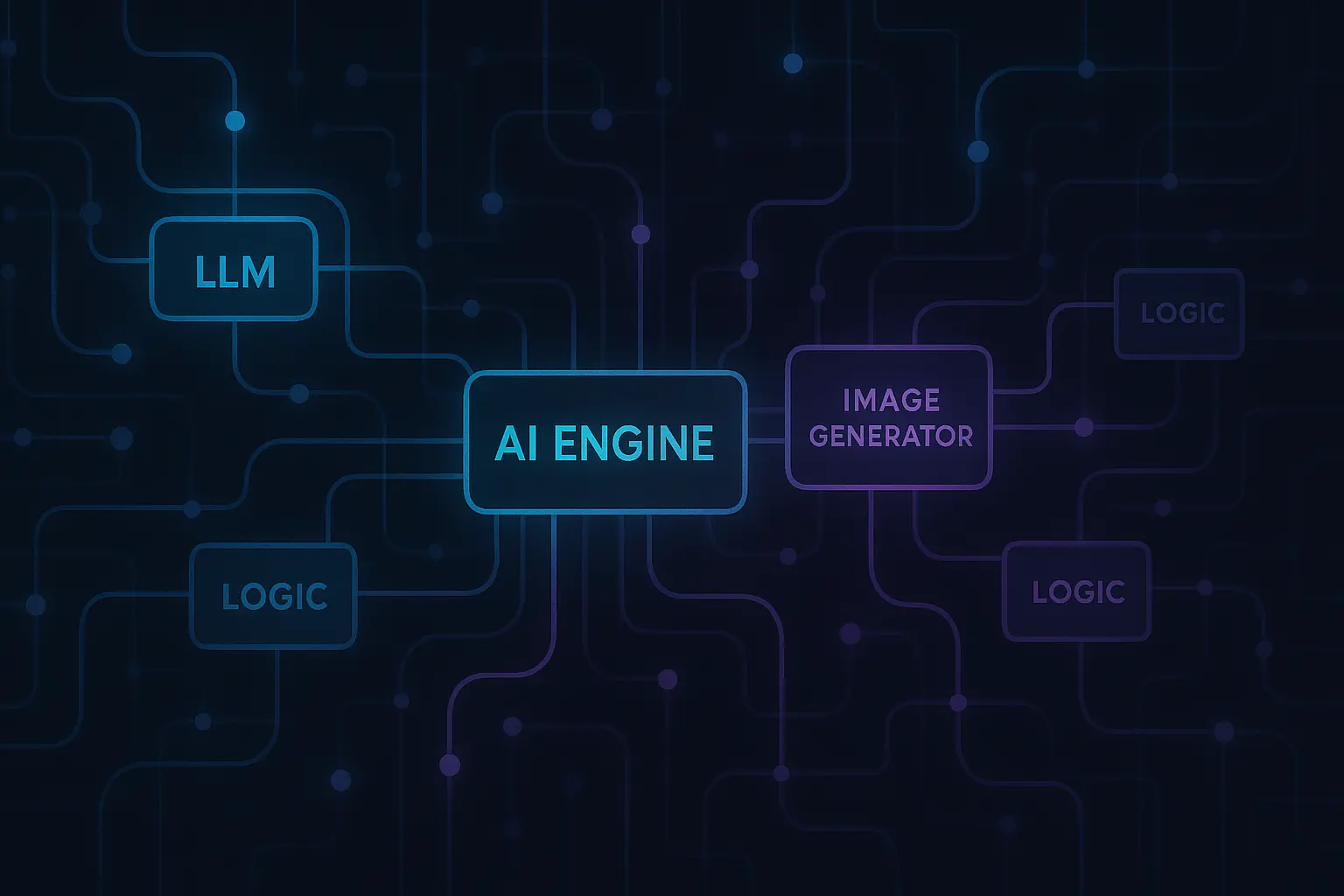In our last post, we announced Sandscape, our social gaming platform where you can describe a game idea and watch it come to life using AI. Many of you have been diving in, creating unique worlds, and asking: how does this actually work?
Today, we want to introduce you to the engine driving that experience: ze1.
What is ze1? The Brains Behind the Magic
ze1 is the AI technology platform we developed internally to make Sandscape possible. Think of it as a no-code, visual builder specifically for creating complex AI systems. If you're familiar with Unreal Engine's Blueprints for game logic, imagine something similar, but designed to orchestrate AI models, data, and decision-making processes.
With ze1, instead of writing code, you visually connect different blocks:
- AI Models: Large language models (like GPT), image generators (like Stable Diffusion), text-to-speech, etc.
- Logic Nodes: Components that manage steps, make decisions (like state machines or conditional logic), or plan tasks.
- Data & APIs: Connections to databases, external services, or memory systems to give the AI context.
By linking these nodes together, you design an AI workflow – a complete sequence of operations that performs an intelligent task.
How ze1 Makes Sandscape Work
Sandscape's ability to turn your text prompts into playable games relies heavily on ze1's cognitive orchestration capabilities. Here's a glimpse of how it powers key features:
- Game Concept Generation: When you type your game idea (e.g., "a cyberpunk racing game through neon-lit streets"), ze1 orchestrates the process. It might first send the prompt to an LLM to expand the concept, then use logic nodes to analyze the request for genre and key elements.
- Asset & Content Suggestion: Based on the concept, ze1 workflows can call out to different generative models to suggest visual styles, character archetypes, or even draft narrative snippets. It manages fetching these suggestions and presenting them to you within Sandscape.
- Structuring the Game: ze1 helps translate the high-level idea and your subsequent choices into the actual parameters and structure needed to launch the game using our web game framework. It sequences the steps, ensuring the right pieces come together.
- Interactive Guidance (Chat): Even the way Sandscape might guide you through the creation process, asking clarifying questions or offering choices, can be designed as a workflow within ze1, making the interaction feel natural and intelligent.
The Power of Visual AI Orchestration
Using a visual, node-based system like ze1 gives us incredible speed and flexibility. We can design, test, and modify complex AI-driven interactions much faster than traditional coding would allow. It lets us combine the strengths of different AI models seamlessly and build sophisticated generative pipelines.
Crucially, these workflows designed in ze1 aren't just internal tools; they can be instantly deployed as scalable API endpoints. This is how Sandscape accesses the power of ze1 behind the scenes.
More Than Just Games
While ze1 is the heart of Sandscape today, it's fundamentally a versatile platform for building and deploying any kind of AI-powered application or service visually. The focus on orchestrating generative and cognitive components makes it powerful for a wide range of creative and intelligent automation tasks.
So, the next time you're crafting a game in Sandscape, know that ze1 is the conductor making sure all the AI instruments play together harmoniously to bring your vision to life. It's the engine enabling this new form of instant, AI-driven creation.
Want to see what ze1 helps create?
Read the Sandscape Announcement
Sebastien Nadeau & The Sandscape Team
